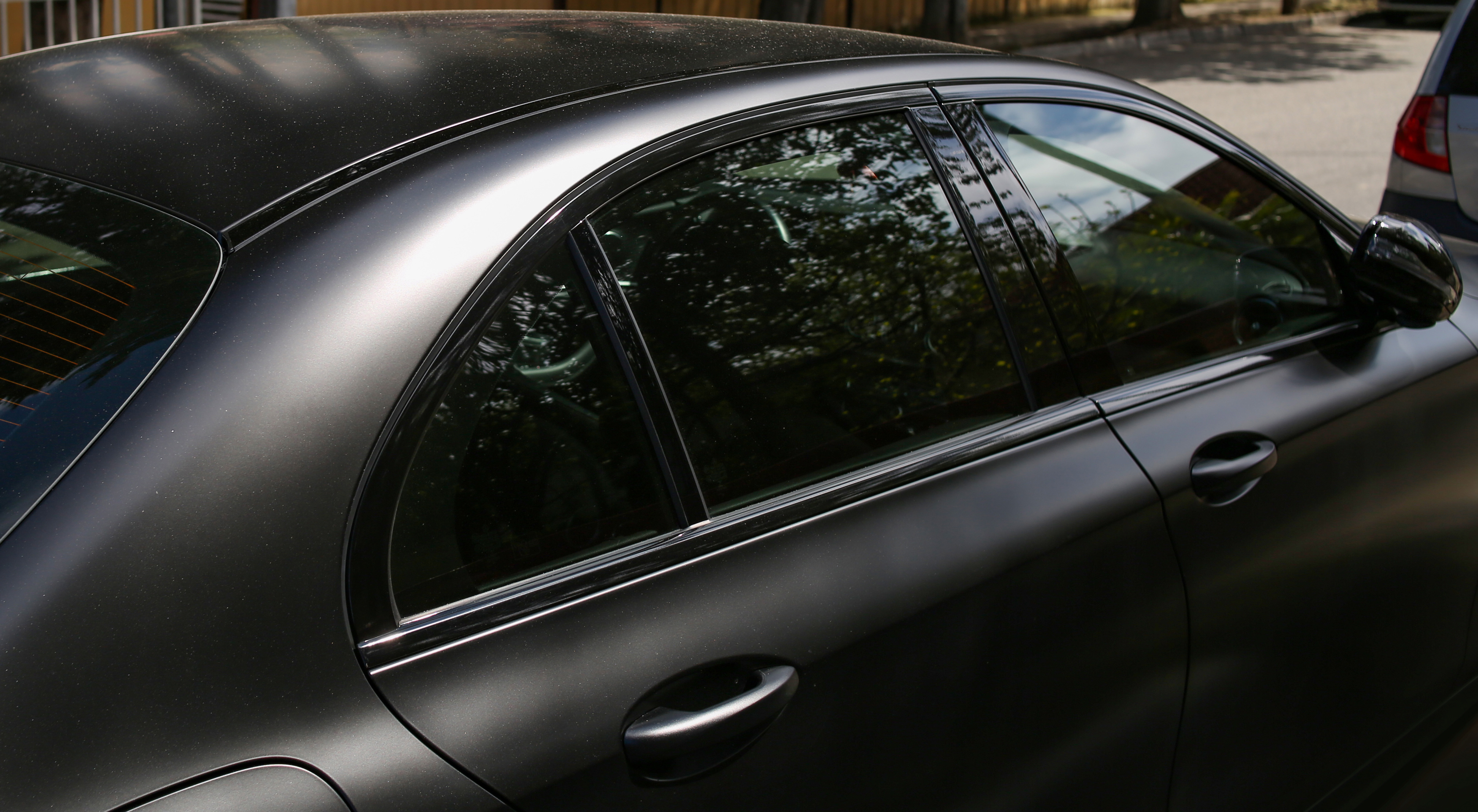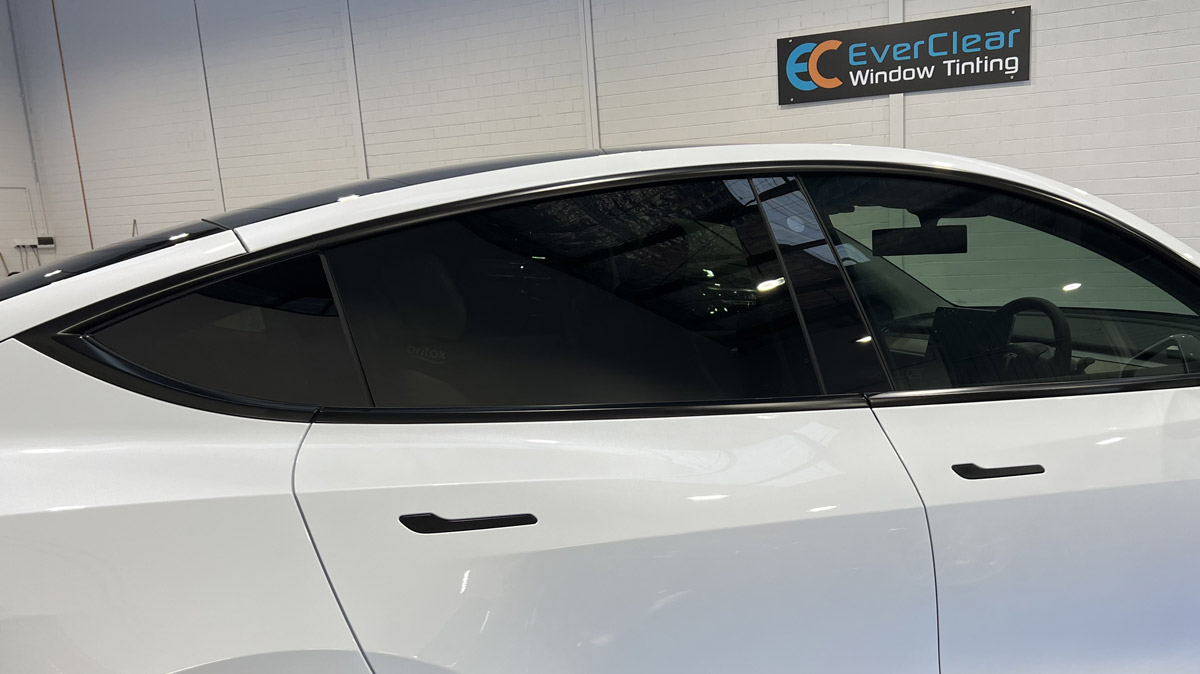Window Tinting Options: Locate the Right Shade for Your Style and Needs
Selecting the suitable window tint for your vehicle entails a mindful factor to consider of numerous variables, consisting of individual visual appeals, functional requirements, and lawful constraints. With alternatives varying from light tintss that offer minimal personal privacy to darker tones that improve seclusion, the choices can be overwhelming. window tinting. Comprehending the effects of noticeable light transmission (VLT) percentages and the advantages of different products is crucial in making an informed option. As you ponder your alternatives, you might question how these components interaction to produce not simply an appearance, however a tailored experience when traveling.
Understanding Window Tinting Levels
When considering window tinting, it is important to understand the different levels of tint available, as they dramatically affect both appearances and performance. Window tinting is categorized based upon Noticeable Light Transmission (VLT) portions, which show the amount of light enabled to travel through the glass. The VLT percent can range from really light (over 70%) to very dark (below 5%)
The key levels of tint consist of clear, which offers UV security without modifying visibility; light tint (over 50% VLT), which somewhat decreases glow while maintaining exposure; tool tint (around 35% VLT), striking a balance between personal privacy and light transmission; and dark tint (listed below 20% VLT), offering considerable personal privacy and warm decrease yet limiting outside presence.
Recognizing these levels is important as they can influence driving safety, legal compliance, and personal comfort. Additionally, regional guidelines usually dictate acceptable tint levels, varying by state or community. Prior to choosing a color, it is a good idea to research study and make certain adherence to these regulations while considering personal choices for design and useful advantages.
Popular Tint Shades Explained

One of the most preferred options is the traditional dark tint, generally varying from 20% to 5% VLT (Noticeable Light Transmission) This shade uses optimum privacy and a sleek, innovative look. It successfully blocks UV rays and warm, making it suitable for sunny climates, though it might restrict visibility in the evening.
On the other hand, lighter tones such as 35% or 50% VLT provide a much more refined look while still offering some degree of privacy. These tones are excellent for those seeking a balance between aesthetics and capability, as they enable much better exposure and abide by numerous legal standards.
Another emerging preference is the ceramic tint, which can be available in a selection of tones - window tinting. It supplies exceptional warmth being rejected and UV protection without substantially modifying the lorry's look

Legal Laws for Window Tinting
Comprehending the lawful policies bordering window tinting is crucial for vehicle owners looking to personalize their cars. Each state in the U.S. has certain legislations controling the darkness or lightness Go Here of window tintss, often determined by Visible Light Transmission (VLT) percent. VLT refers to the amount of light that can pass via the glass and the film incorporated.
In many states, laws dictate different VLT percents for numerous windowss, including front windshields, side windowss, and back windowss. For example, some states may enable a color of 70% VLT for windscreens while allowing darker tintss for back windowss. In addition, certain states have restrictions on reflective tintss, which can create glare for other motorists.
Failing to follow these regulations can result in fines, mandated removal of the tint, and boosted insurance policy costs. Vehicle owners must get in touch with local laws or state DMV websites to ensure they are within legal limits before proceeding with installation. Understanding these regulations not just aids stay clear of legal repercussions however additionally makes certain a risk-free driving experience.
Benefits of Different Tint Materials
Discovering the advantages of numerous tint products exposes significant benefits that can enhance both the capability and aesthetic appeal of a car. Each product offers distinct attributes fit to certain requirements and choices.
Dyeded window films are preferred for their price and ability to lower glare. They successfully block UV rays, shielding the inside from fading, though they might not supply the highest possible warm being rejected. Metalized films, on the other hand, offer superior warm reduction and UV security as a result of their reflective properties. They can boost privacy and security but might disrupt digital signals.
Ceramic window films represent a costs choice, giving outstanding warm rejection while maintaining visibility. They are non-metallic, therefore staying clear of any type of signal disruption, and are very long lasting, standing up to scrapes and fading with time. Furthermore, ceramic films do not consist of dyes, guaranteeing a longer-lasting look.
Lastly, crossbreed films incorporate elements from dyeded and metalized alternatives, using a balanced efficiency in regards to heat denial, glow reduction, and expense. Each tint material serves one-of-a-kind functions, enabling lorry proprietors to choose the ideal suitable for their lifestyle and aesthetic preferences, ultimately boosting their driving experience.
Picking the Right Tint for You
Finding the right window tint involves taking into consideration numerous factors, consisting of individual preferences, automobile type, and regional policies. First, examine your individual style and preferred degree of personal privacy, as these will lead your selection of tint shade. Darker tintss provide enhanced privacy however might not appropriate for all motorists, especially those who like a more open feel inside their vehicle.
Following, consider your car type, as the shapes and size of windowss can influence the effectiveness of particular tintss. As an example, larger windowss may profit from reflective tintss that lower glow you can try these out while smaller sized windowss may be more fit to dyeded films that use subtle visual appeals.
Additionally, it's crucial to examine local guidelines regarding window tinting. Several states enforce limitations on the allowed darkness and reflectivity, specifically for front windowss. Compliance with these legislations is vital to stay clear of penalties and make sure safety.
Last but not least, evaluate the tint product that finest matches your needs. Options include dyeded, metalized, ceramic, and crossbreed films, each offering one-of-a-kind benefits associating with warm denial, UV defense, read the article and sturdiness. By considering these variables, you can with confidence select a home window tint that lines up with your style and practical needs.
Final Thought
Finally, selecting the appropriate window tint needs careful consideration of numerous elements, consisting of VLT portions, regional guidelines, and the preferred aesthetic. Different tint materials provide one-of-a-kind benefits that can boost automobile convenience and security. By thoroughly understanding the available options and aligning them with individual preferences and sensible requirements, one can attain an optimal equilibrium in between style and capability in window tinting choices.
Choosing the proper window tint for your vehicle involves a cautious consideration of numerous aspects, including personal aesthetic appeals, functional requirements, and lawful limitations. Each state in the U.S. has particular regulations controling the darkness or lightness of window tintss, commonly measured by Visible Light Transmission (VLT) percentage. Some states may allow a color of 70% VLT for windshields while allowing darker tintss for back windowss.Discovering the right window tint entails taking into consideration numerous factors, including personal choices, car kind, and regional guidelines.In verdict, selecting the ideal window tint requires careful factor to consider of numerous elements, consisting of VLT portions, local laws, and the wanted visual.